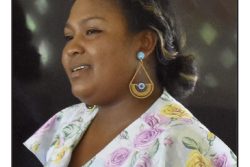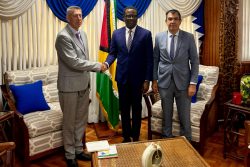Dear Editor,
As ACDA continues to fulfill one of its original stated objectives of working to bring about a cultural revival of our traditional values while working on self-improvement it will this year at Kwanzaa be launching its “Drums for Village Programme”. This cultural programme would see ACDA distributing drums in our villages with the hope that by emancipation most of our villages would be able to take part in our inter-village drumming competitions.
Kwanzaa is a Diaspora-African cultural holiday. Celebrated from 26 December thru 1 January, its origins are in the first harvest celebrations from which it takes its name. The name Kwanzaa is derived from the phrase “matunda ya kwanza” which means “first fruits” in Swahil. Kwanzaa builds on the five fundamental activities of “first fruit” celebrations which are ingathering; reverence; commemoration; recommitment; and celebration. It is a true time of gathering for family and Community coming together where people can renew and reinforce bonds between them.
The Principals of Kwanzaa are: 1. Umoja/Unity…2.Kujichagulia/Self-Determination.3. Ujima/Collective work and responsibility. 4. Ujama/Cooperative Economics 5. Nia/Purpose. 6. Kuumba/Creativity 7. Imani/Faith
Preparing for Kwanzaa
Before December 26, the first day of Kwanzaa, the day of Umoja or Unity, the entire house is cleaned. The home is then dressed in the colours of red, green and black. African motifs are often displayed along with other cultural articles.
The Kwanzaa table or corner is set up in the home. The table consists of the Kwanzaa symbols. First the straw mat is laid. On this mat rests the other symbols and articles. The candleholder with the seven candles is then placed on the mat, along with the bowl of fruits and ears of corn. Any other product which the family has produced during the year can also be displayed.
On the morning of the 26th, the entire family gathers around the Kwanzaa table. Libations are offered to the creator and ancestors. The family then discusses their failures and achievements in fostering unity in the family and community over the past year. The candle of Umoja is then lit. It is important that the children and elders participate in the ceremony with the view of bridging the generational gap, thus continuing the tradition. If anyone has exemplified this principle during the previous year, Zwadis or gifts are given.
This ceremony is repeated with each principle being the centre of discussing for the next seven days.
History of Kwanzaa in Guyana
Kwanzaa was introduced in Guyana in the 1970s. However, it did not become part of the African-Guyanese cultural calendar until 1992 when the newly formed African Cultural and Development Association (ACDA) revived the celebration and held its first observance.
This year as usual at ACDA Headquarters on Thomas Lands our community feast or in-gathering will take place on Wednesday December 26th (which is the first day of Kwanzaa Umoja (Unity). On this day the entire community assesses its failures and accomplishments, and establishes goals for the upcoming year, in achieving the principles of Kwanzaa. Elders, youths, and other persons who have upheld any of the principles are honoured accordingly. Since Kwanzaa is a family oriented celebration, the entire family is expected to participate. The programme starts at 11am. Admission is free. Cultural food is on sale.
Yours faithfully,
Wonetta Jones
Secretary
ACDA







